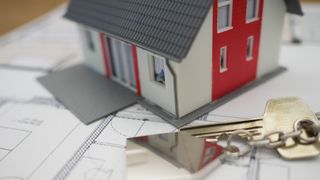The National Association of Realtors (NAR) said (opens in new tab) that just 4.33 million transactions were completed in April, with the month-over-month drop the largest seen since July 2010. Sales were also 17.2% down on a year earlier, as borrowers struggled to get deals over the line, despite the best mortgage lenders (opens in new tab) offering some of the lowest rates on record (opens in new tab). According to analysts (opens in new tab), the drop was largely expected given the social distancing and stay-at-home orders that were in effect for most of March and April. “Widespread restrictions to contain the spread of the pandemic have been challenging for both buyers and sellers,” said Mark Vitner, Senior Economist at Wells Fargo. “Virtual tours and digital signings have been useful stop-gap measures. They were clearly not enough to avoid a sharp pullback in buying activity and new listings.”
What about sales across the regions?
The NAR revealed that all four major regions experienced monthly and annual declines in sales, with the Covid-19 outbreak refusing to respect borders. The West was the hardest hit, with existing-home sales falling 25% to an annual rate of 810,000 in April, a 27% decline from a year ago. The South recorded a 17.9% drop to an annual rate of 1.88 million, down 16.8% from April 2019, while the Northeast saw sales fall 16.9% to an annual rate of 540,000, an 18.2% decrease from a year ago. Least affected was the Midwest, where sales decreased 12% to an annual rate of 1.10 million, down 8.3% from a year ago.
How are house prices reacting?
Despite the fall-off in transactions, the NAR said house prices remained higher than a year earlier, thanks largely to a shortage of homes for sale, especially for first-time buyers. Marking 98 straight months of year-over-year gains, the median price for existing-homes sold of $286,800 was up 7.4% from April 2019 ($267,000), with prices rising in every region. Gains were strongest in the Midwest, where the median sold price of $229,200 was 9.3% higher than a year earlier, while the Northeast reported growth of 8.7% to $312,500. The median price in the South was $249,400, a 6.4% increase from a year ago, while in the West, prices climbed by 6.1% to $419,300. “The economic lockdowns – occurring from mid-March through April in most states – have temporarily disrupted home sales, but the listings that are on the market are still attracting buyers and boosting home prices,” said Lawrence Yun, NAR’s chief economist. “Record-low mortgage rates are likely to remain in place for the rest of the year, and will be the key factor driving housing demand as state economies steadily reopen. Still, more listings and increased home construction will be needed to tame price growth.”
What else has been happening in the real estate market?
While prices remain high compared with a year ago, the dramatic slide in sales, alongside findings from other recent studies, reveal the uncertainties facing those trying to buy or sell a home at this time, or refinance (opens in new tab) their mortgage. Only last week it was revealed how around a quarter of homeowners putting homes up for sale have cut their asking prices below pre-pandemic levels (opens in new tab). At the same time, the financial struggles created by the coronavirus has seen the number of Americans missing mortgage payments recently pass four million (opens in new tab). Unsurprisingly, most home-movers are putting their plans on hold (opens in new tab), although one group perhaps finding conditions slightly more favorable are first-time buyers, who the NAR said were responsible for 36% of sales in April, up from 34% the month before and 32% in April 2019. By comparison, individual investors or second-home buyers, who account for many cash sales, purchased just 10% of homes last month, down from 13% in March and from 16% a year earlier.
Has the worst already passed?
Although most will likely put their home-moving aspirations on hold until something resembling a more normal reality resumes, the prospect of cheaper asking prices and the near record low interest rates on offer from the best mortgage lenders (opens in new tab) suggests opportunities could still arise for the right buyer. There is also cautious optimism from Mark Vitner at Wells Fargo that the worst is perhaps over, and that real estate could be among the first markets to bounce back. “While most areas of the country have now reopened, it will be a slow and gradual recovery,” he says. “More optimistically, there are green shoots suggesting the housing market will help lead the recovery. Purchase mortgage applications dipped in late March and early April but have since steadily risen and are now down only 1.5% from their year ago level.” Find out whether you could benefit from historically low interest rates with one of the best refinance mortgage companies.
